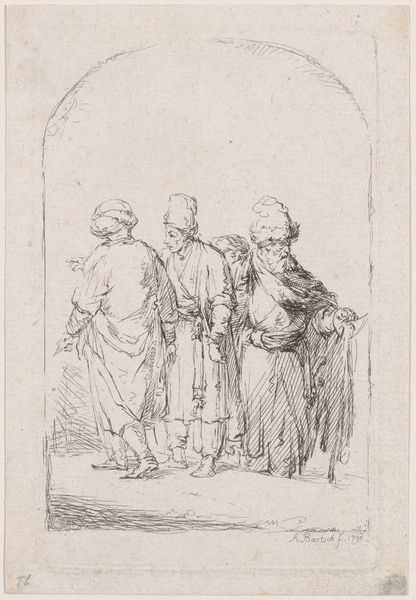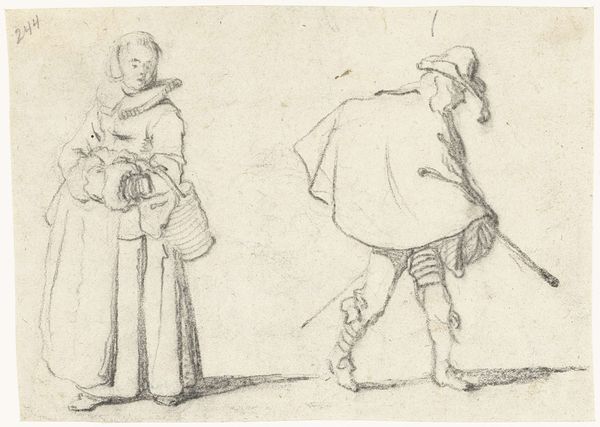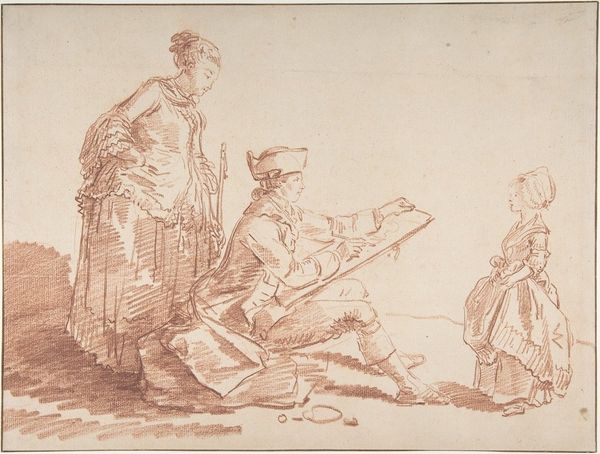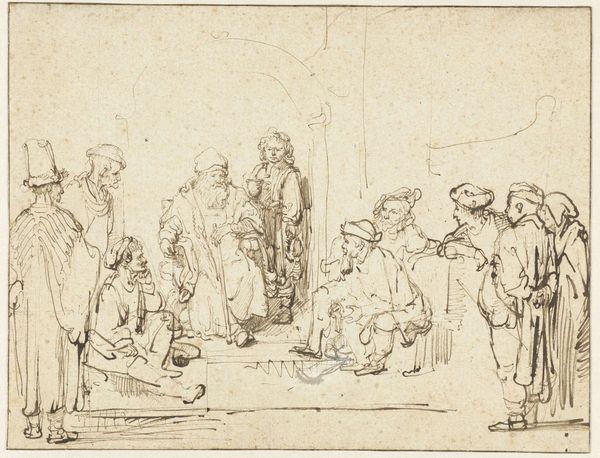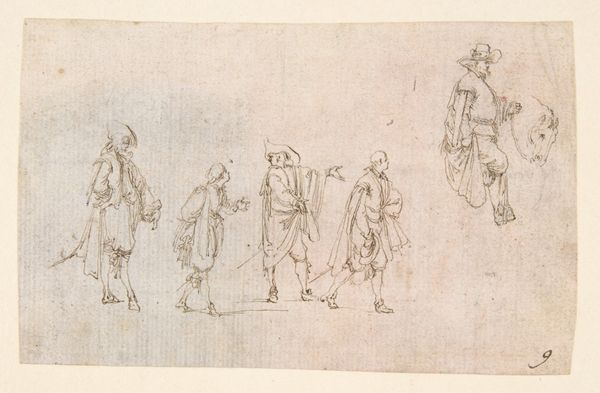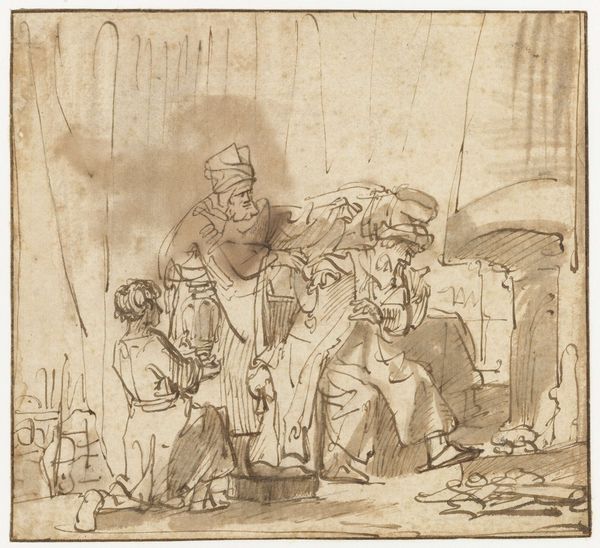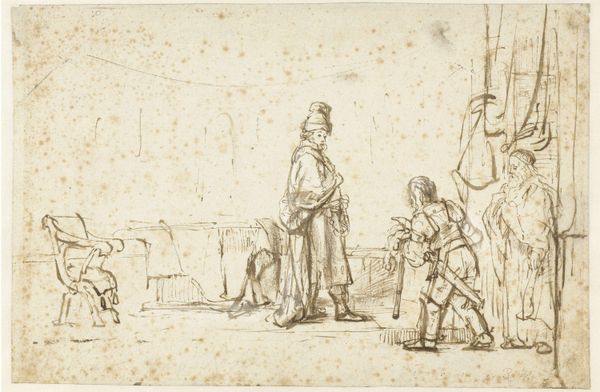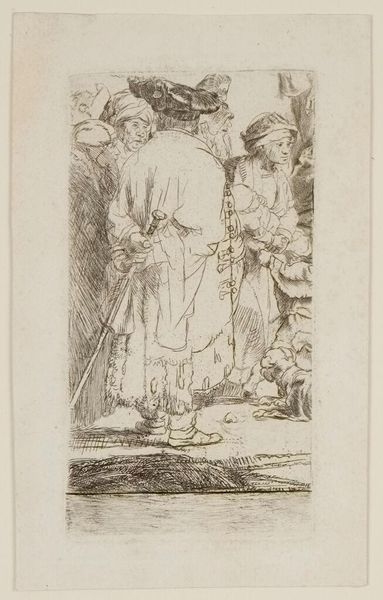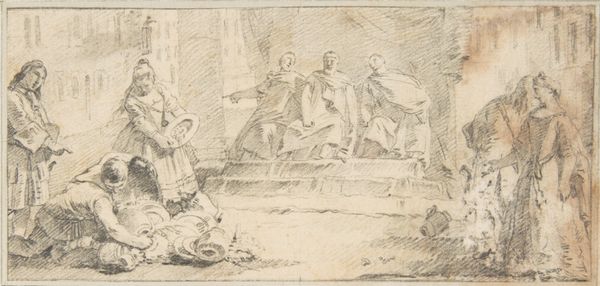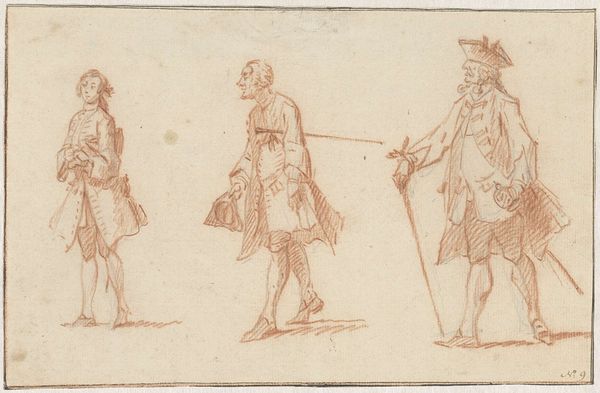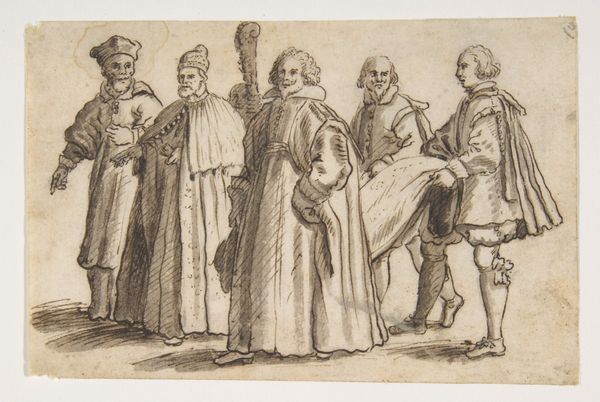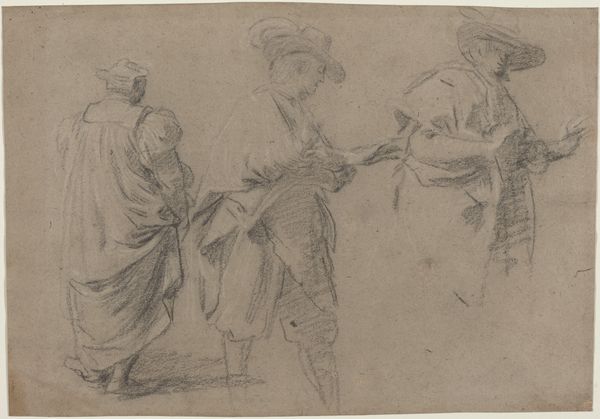
Study of Figures: an Old Man Holding a Hat and Facing Forwards, and a Young Man Holding a Torch and a Hat, seen from both the Front and Left Sides; Verso: Study of a Head 1575 - 1650
0:00
0:00
drawing, print, pencil
#
portrait
#
drawing
#
baroque
# print
#
figuration
#
pencil
Dimensions: sheet: 7 5/16 x 10 11/16 in. (18.5 x 27.1 cm)
Copyright: Public Domain
Editor: Here we have a drawing by Antoine Sallaert titled 'Study of Figures: an Old Man Holding a Hat and Facing Forwards, and a Young Man Holding a Torch and a Hat, seen from both the Front and Left Sides; Verso: Study of a Head', made sometime between 1575 and 1650 using pencil. It's at the Met in New York. The loose, sketchy quality makes it feel really immediate. What stands out to you? Curator: The drawing's function interests me most. These aren't just character studies, they reflect the Baroque era’s interest in capturing human drama. Think about the political context of Sallaert’s time, the religious conflicts and social upheaval. These figures, rendered with such intensity, might be studies for larger compositions reflecting on power and the individual's place within a shifting social order. Does the young man's torch symbolize enlightenment or perhaps revolution? And what does the old man represent? Editor: Revolution, that's interesting! I hadn’t considered a direct political reading. It just felt like character studies to me. Are you suggesting that Sallaert was making a political statement with these sketches? Curator: Perhaps "statement" is too strong. But artists operate within a visual culture and are undoubtedly shaped by the environment around them. Consider the role of the Catholic Church at this time; Sallaert might have aimed to show that not all enlightenment should come from it. By leaving the meaning open-ended, Sallaert encourages the viewer to participate in the construction of meaning, engaging with the work on their terms. How do *you* read that the body is turned to the side while the face is shown forward? Editor: I hadn’t really considered it deeply. It makes me think about seeing two sides of someone. Thanks for your reading of the social elements! I see so much more in the work now. Curator: My pleasure! And in seeing that you recognize those dualities, perhaps there is revolution after all.
Comments
No comments
Be the first to comment and join the conversation on the ultimate creative platform.
